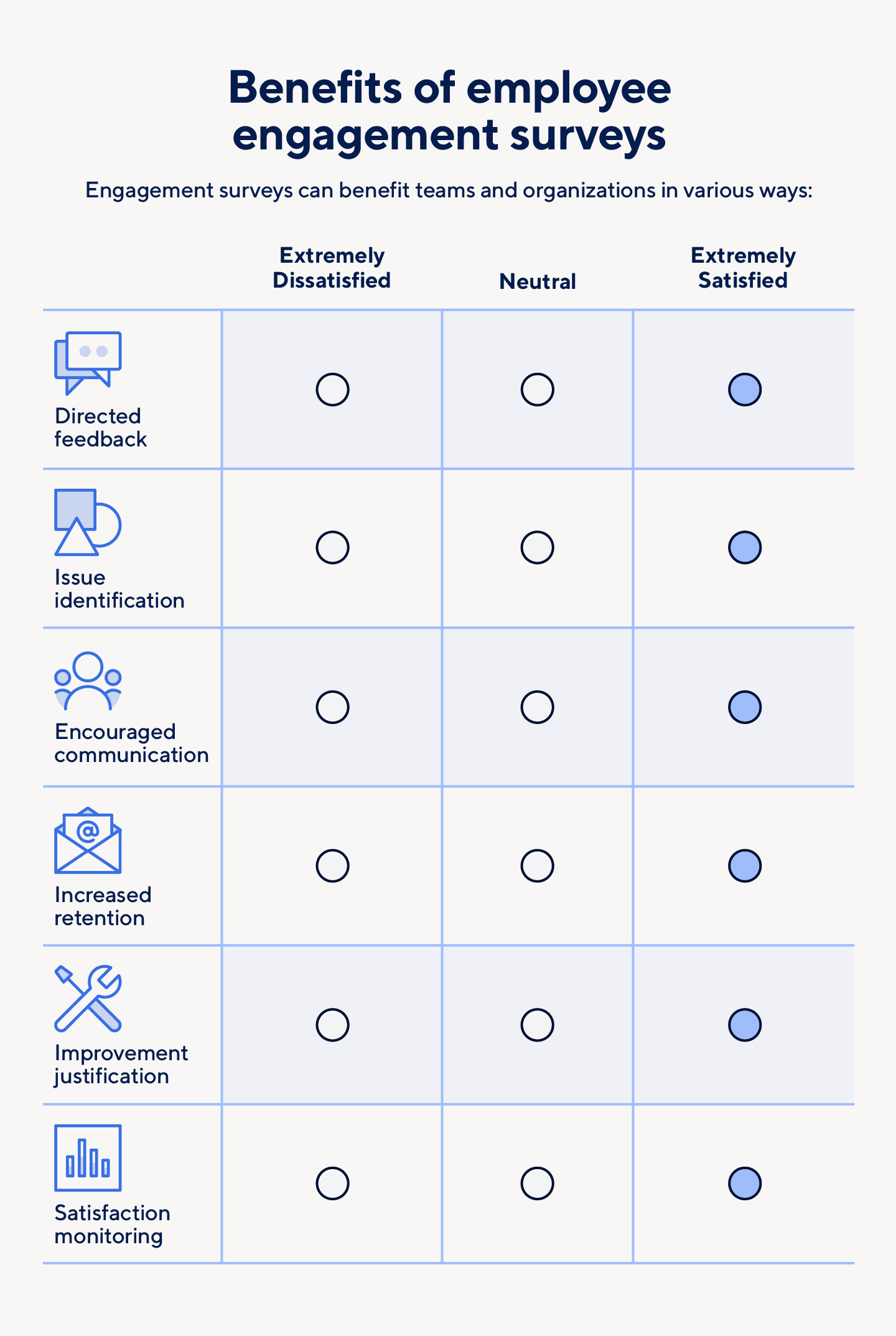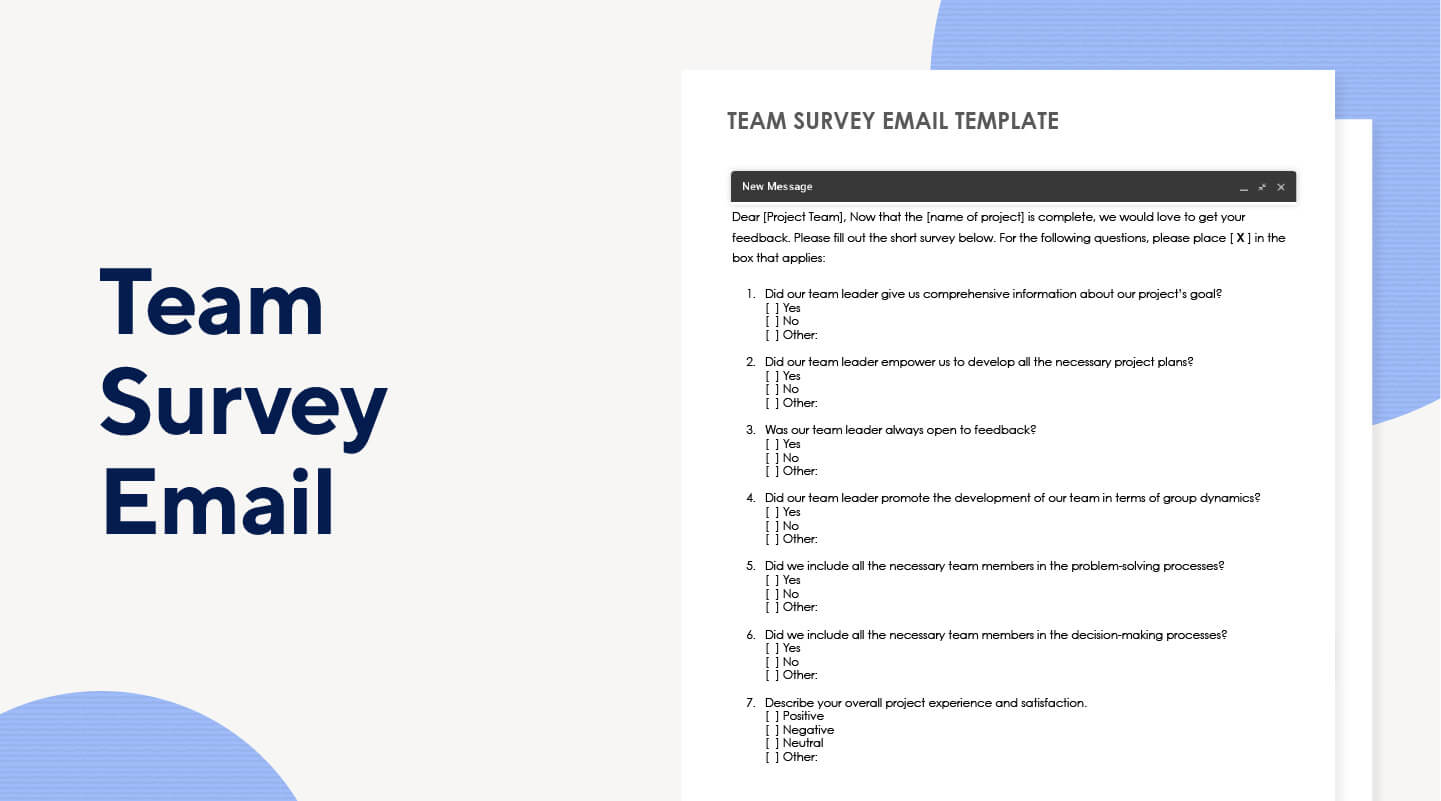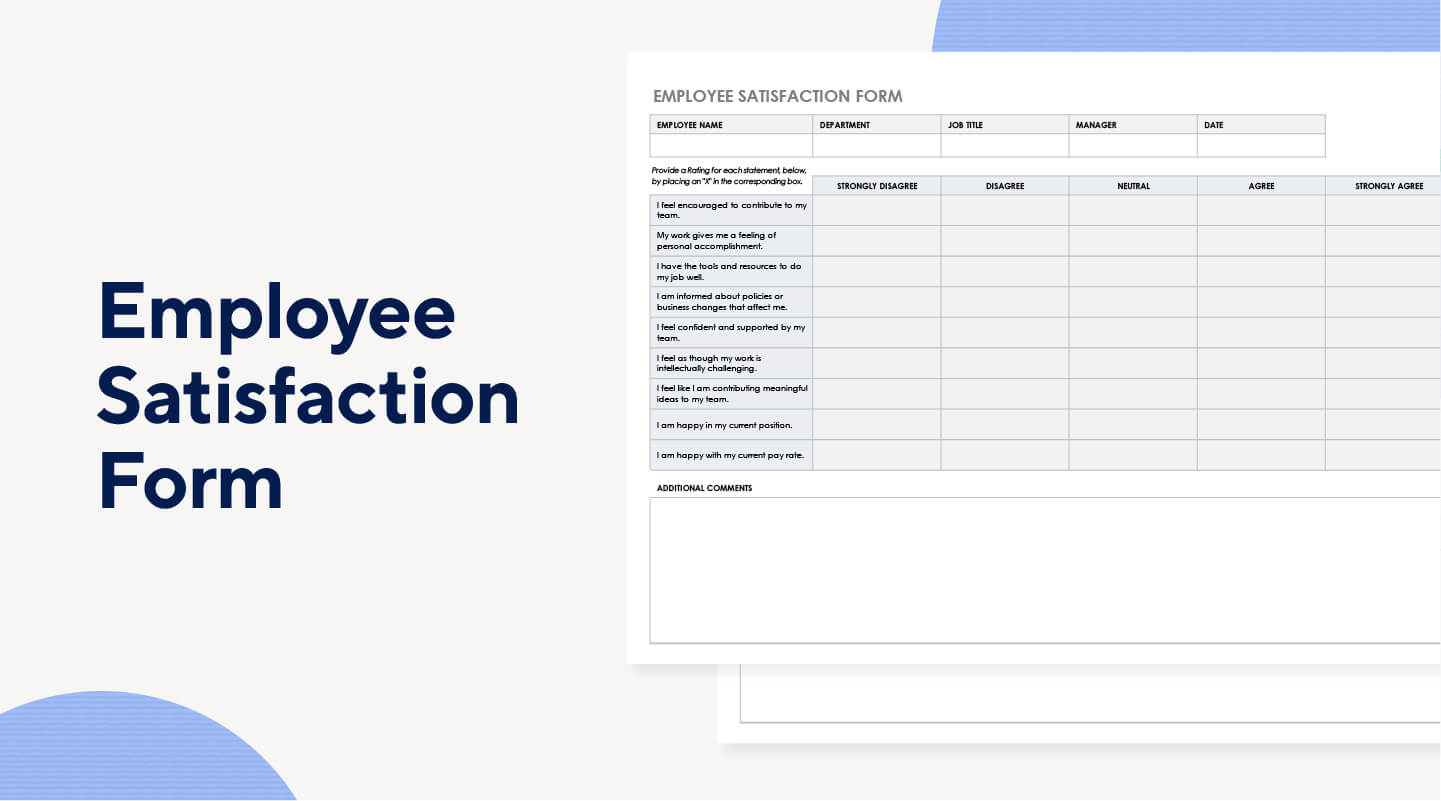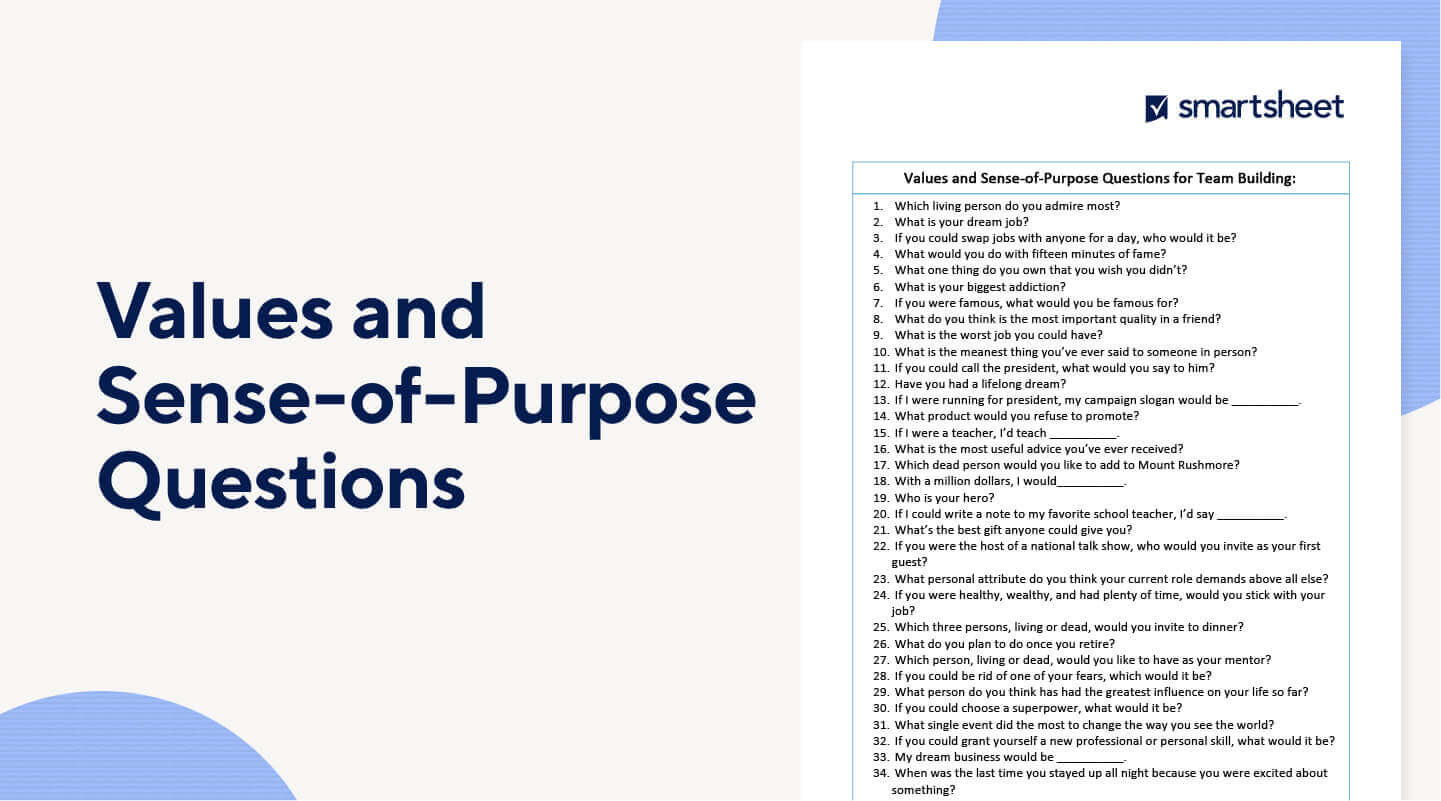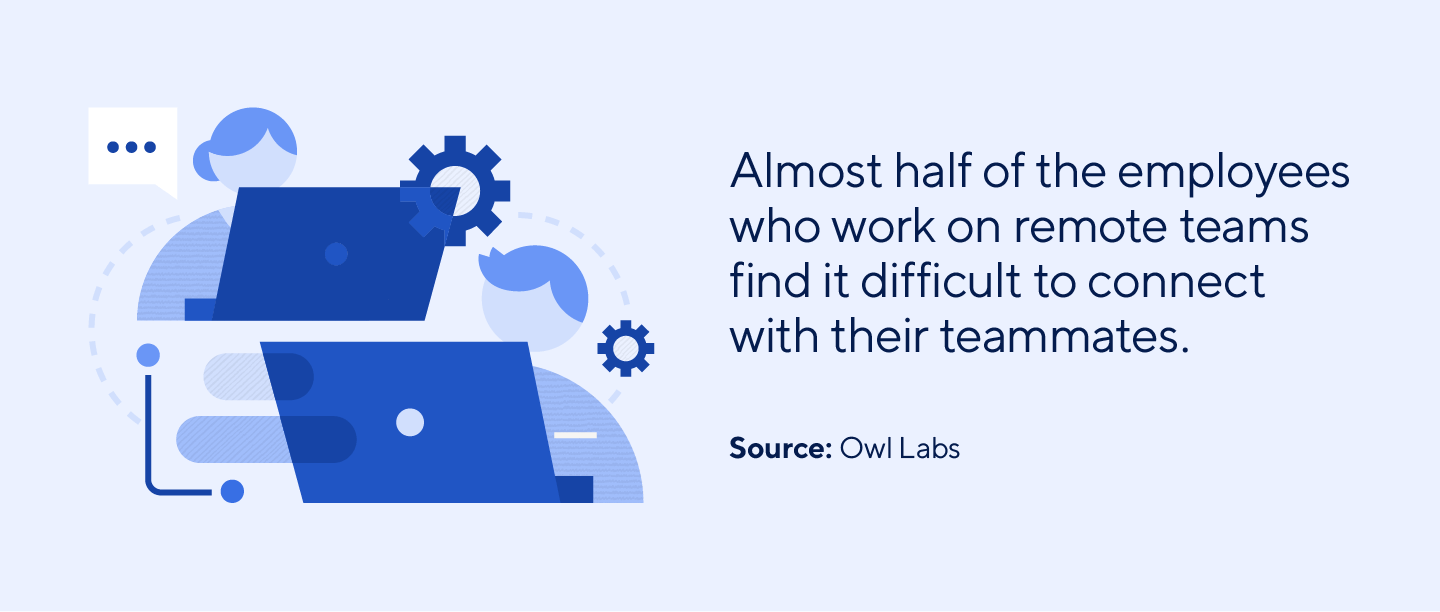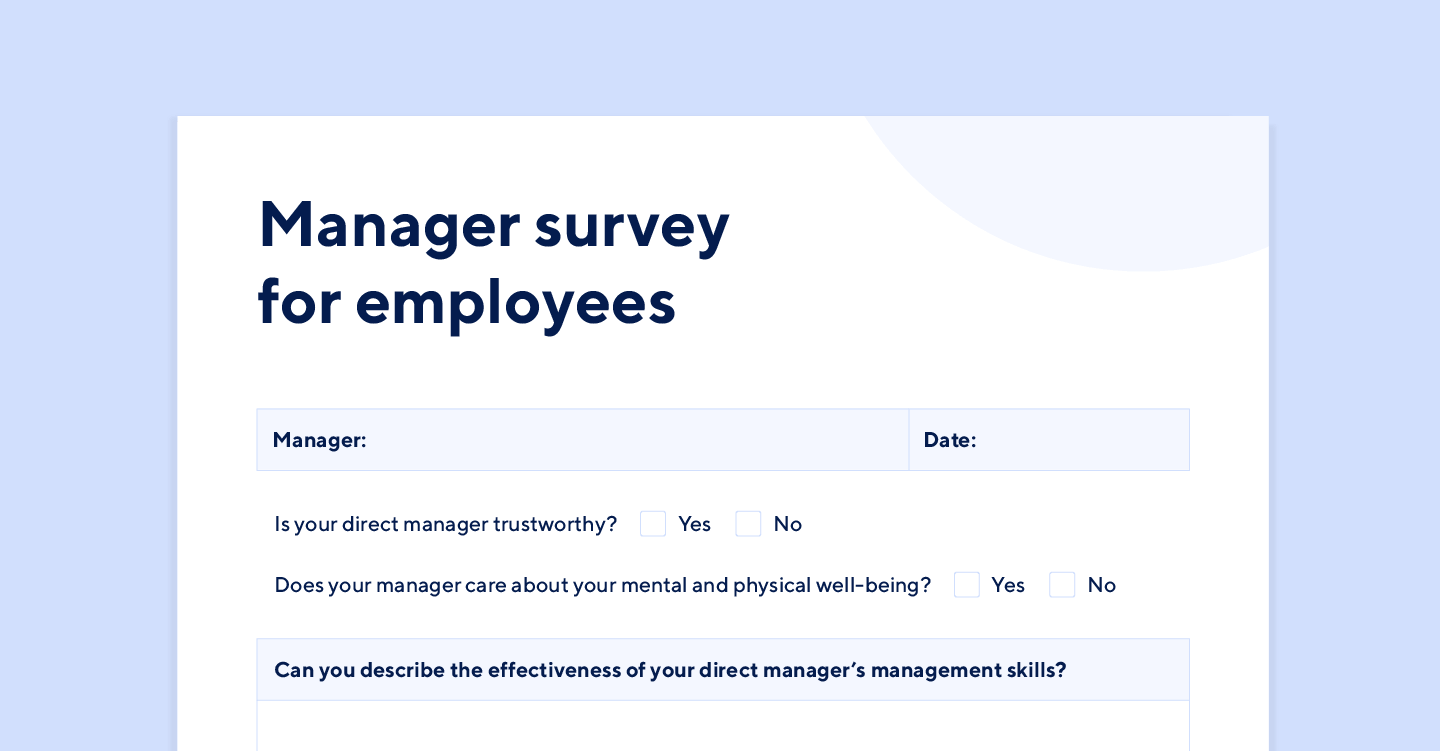What Is an Employee Engagement Survey?
Organizations use employee engagement surveys to measure the satisfaction and engagement of employees. They can use the data from these team assessments to improve areas where employees are not content. Organizations should administer employee engagement surveys regularly to track satisfaction trends and monitor changes in company and team culture.
Benefits of Employee Engagement Surveys
If implemented correctly and administered regularly, team surveys can benefit organizations in a variety of ways, such as improving retention, encouraging communication, and continually monitoring satisfaction.
Here’s a closer look at some of the things that regular employee engagement surveys allow you to do:
- Collect Direct Feedback From Your Team: Program, process, and system changes are best reviewed through direct feedback from those impacted by the change.
- Identify Issues: Employees can give a firsthand account of company, process, and culture issues. You can use this information to make meaningful changes to the way you manage projects, communicate, and more.
- Increase Retention: Engagement, satisfaction, and appreciation can increase the likelihood that employees will stay with a company.
- Encourage Communication: Open-ended questions and consistent team surveys can encourage open communication between employees and managers on a regular basis.
- Justify Improvements: The data you gain from team surveys can justify new improvements or system changes within an organization to upper management.
- Monitor Satisfaction: Employee engagement and satisfaction fluctuates, but regular assessments can help companies monitor them at most times.
How to Plan a Team Survey
When planning a team survey, there are three main factors to consider: length, frequency, and the questions themselves. Below, we’ll walk you through each step in greater detail.
Step 1: Set Survey Length
There is no one-size-fits-all approach to determining the length of a team survey. However, surveys should be long enough to acquire useful data without inducing fatigue.
Initial surveys can be longer, as they need to be comprehensive — sometimes as long as 30 questions. Regular follow-up and pulse-check surveys should be shorter — between one and 10 questions. In general, research shows that surveys that can be completed between 10 and 15 minutes are the most effective at keeping an individual’s attention.
Step 2: Determine Frequency
While it’s important to administer team surveys regularly, don’t overwhelm your employees with too many surveys. Choose a survey frequency that will allow your employees to express their concerns as they arise — perhaps once a quarter — and switch up your survey questions to keep your team assessments interesting and worth everyone’s time.
Step 3: Choose Team Survey Questions
The final — and most important — part of planning a team survey is choosing the right survey questions. Engagement and satisfaction surveys can provide insight into how employees view a company’s communication, diversity and inclusion efforts, team collaboration, culture, remote work support, upper management, and other business factors.
Allowing employees to answer a variety of questions — including open-ended, multiple choice, and sliding scale questions — can also provide unique insights into their professional satisfaction.
Employee Engagement Survey Questions
Employee engagement survey questions are designed to allow employees to discuss their feelings about team-building practices, productivity, motivation, and team support.
1. How Challenging Is Your Work?
Challenges at work can both dissuade and encourage employee engagement. Identifying where employees feel under or overwhelmed can help companies support them during their everyday work.
2. Do You Enjoy Your Work?
Professional fulfillment and enjoyment should be prioritized in the workplace. Managers should be open to the idea that employee satisfaction can be reached through challenging yet rewarding projects.
3. Are You Committed to the Work You Do?
Meaningful work can encourage employees to work harder and invest in high-quality products. Committed employees can clearly see how their work impacts their team and organization as a whole.
4. How Reasonable Is Your Current Workload?
The weight of an employee's workload can either encourage or discourage their productivity. Managers should evaluate how they delegate work and assign projects to challenge and grow employee strengths.
Team Feedback Questions
Employees should feel connected to and comfortable with their teams. Team feedback questions should focus on team collaboration and support.
11. Do You Feel Accepted and Respected Within Your Team?
Employees who feel accepted and respected within their teams are able to focus on work-related communication and project completion rather than interpersonal relationships.
12. Do You Trust Your Team to Support You?
Employees who are unable to trust their teammates may not be able to perform their best. Understanding this underlying issue, through assessments and team survey emails, can help leaders identify areas for improvement.
Download a Team Survey Email Template for Microsoft Word
This team survey email template allows you to collect team and project feedback via short, simple email surveys. Open-response questions allow individuals to communicate their personal thoughts concerning tasks and other situations anonymously.
13. Does Your Team Collaborate?
Collaborative teams recognize the strengths and weaknesses of each individual. Successful team collaboration can encourage team relationships and increase retention.
14. Do You Understand Your Responsibilities?
Transparent expectations help employees and companies reach mutual objectives. Leaders should clearly communicate the roles and responsibilities of each team member, including expected timelines.
15. Are You Able to Meet Your Goals and Objectives?
Setting and meeting expectations can help increase team engagement and success. Teams should know what resources are available to them when questions arise, whether that be other team members, documentation, or tools.
16. Do You Believe Your Organization Is Equipped to Reach Its Goals and Objectives?
Collective goals are important to the overall success of an organization. If employees don’t believe that the company has the ability to meet its stated goals, they may feel unmotivated to contribute individually. This can lead to lower engagement and potential turnover.
17. Do You Have the Resources You Need to Successfully Do Your Job?
Resource libraries and documents should be readily available to all employees. Additionally, individuals should be able to direct other employees to the correct resources or departments for their projects or questions.
18. Do Your Working Conditions Allow You to Work Freely?
The working conditions of all employees — including physical and mental environments — should be welcoming and flexible. Employees may not perform to a company’s expectations if their working conditions are poor.
Employee Survey Questions About Culture
Research shows 46 percent of job seekers think company culture is one of the most important deciding factors during their application process. These team survey questions are designed to evaluate the culture of an organization.
19. Are You Satisfied or Happy at Work?
Employee satisfaction — both with the work itself and the company — can encourage employee engagement. Dissatisfaction indicated on employee satisfaction surveys can also be an indicator of growing unrest in other areas of an organization.
Download an Employee Satisfaction Form for Adobe PDF
Measuring employee satisfaction can help leaders identify areas of improvement and concern. This template allows individuals to communicate their current feelings about workplace engagement using a sliding scale.
20. Which Benefit or Perk Would You Most Like to See Your Company Introduce?
This question is designed to encourage employees to discuss benefits they need or want without requesting formal meetings. If employees feel comfortable answering this question with an honest response, organizations should truly consider their requests.
21. Does Your Company Culture Support Its Own Mission and Vision?
A company’s culture should be founded on its own values and beliefs. If these are not upheld within the culture, employees may feel betrayed by their company, and may be less likely to recommend the company to clients or prospective employees.
22. Are You Motivated by Your Organization’s Mission and Vision?
An organization’s mission and vision statements should be reflected in the work it produces. Employees should feel connected to these values, which should increase their commitment to their projects and the company.
23. Would You Recommend Your Company as a Good Place to Work?
Employees who are satisfied with their work are more likely to recommend their organization to potential employees or clients.
24. Is Your Organization Open to Change?
Organizations that are flexible allow employees to voice their concerns and opinions. Employees may engage in different organizational activities or set loftier goals if their companies are open to pushing boundaries.
Download a Values and Sense-of-Purpose Questions Template for Adobe PDF
Employees who feel valued and understand their organizational purpose are more likely to stay with their current company. Additionally, understanding team member values can help managers organize and create projects and team-building activities designed for their employees. This template can help facilitate conversations concerning values and employee purpose.
Diversity and Inclusion Survey Questions
Organizations that don’t have any diversity, equity, and inclusion (DEI) initiatives and values are more likely to see higher turnover rates and lower job acceptance rates. These team survey questions address employee concerns about DEI.
25. Do You Trust Your Organization to Be Fair to All Employees?
All employees should feel they have equal and equitable opportunities within their organization. Leaders can use this question to guide DEI conversations.
26. Do You Trust Your Coworkers to Be Fair to All Employees?
Even if an organization prioritizes DEI initiatives, coworkers may not hold the same values. Employees should be allowed to express their concerns about their working environments openly.
27. Do You Feel Like You Belong?
Employees, managers, and organizational leaders should all prioritize workplace comfort and belonging. If employees feel uncomfortable in their workplace, they are more likely to feel disengaged in their work.
Remote Work Survey Questions
Remote teams have different needs and experiences than in-person teams. Team surveys should address each employee’s experience as a remote worker.
28. Is Your Work Environment Free of Distractions?
Remote workers — especially those who work from home — may have more distractions than team members who work in an office or structured coworking environment. Managers can support remote employees in different ways when they understand their work environments.
29. Is Your Physical Workspace Comfortable?
Companies that prioritize employee workspaces may see higher engagement and productivity. This question alerts leaders to issues outside of general working concerns.
30. Is Remote and Flexible Working Supported by Your Company?
Almost 50 percent of remote employees find it hard to connect or fit in with their teams. Feeling unsupported can lead to retention issues, so identifying this issue early on can allow companies to invest in culture changes.
31. What Remote Events and Team-Building Ideas Are You Interested In? Remote teams may have a difficult time connecting with each other. Leaders can encourage employee engagement through remote team-building ideas and other events.
Remote teams may have a difficult time connecting with each other. Leaders can encourage employee engagement through remote team-building ideas and other events.
Morale Survey Questions
Employee engagement and satisfaction can be directly tied to team morale. These morale survey questions address internal team recognition and employee gratitude.
32. Are Recognition and Gratitude Encouraged by Your Company?
33. Do You Feel Recognized for Your Work?
Even if organizations encourage employee recognition, it can only make a positive impact when employees see and feel the recognition. This question can help organizations see where they need to improve their internal recognition processes.
34. Do You Receive Consistent Workplace Recognition?
Inconsistent recognition can be as dangerous as a lack of recognition. Organizations with regular recognition and gratitude opportunities often see higher employee engagement.
35. Is Your Company’s Internal Recognition Meaningful?
Recognition for recognition’s sake has little to no effect on employee engagement and satisfaction. Recognition and gratitude need to be meaningful, like showing employees how their contributions make a difference in their professional workplace.
Professional Development Survey Questions
These questions address how an organization prioritizes employee development for both internal growth and external professional opportunities.
36. Is There a Clear Path to Promotion or Advancement in Your Company?
Many employees will leave their current company when there isn’t a clear path to professional advancement. Addressing this question allows organizations to create intentional advancement paths so employees know what’s available to them.
37. Do You Have Access to Professional Development Resources Needed to Successfully Complete Your Current Job?
Employees should know how to access courses, readings, and other resources to help them be successful in their current roles. This question can guide leaders and organizations to reevaluate the professional resources they offer.
38. Do You Have Access to the Necessary Professional Development Resources to Expand Your Current Knowledge?
Employees may be able to succeed with their current knowledge and skills, but they should have access to professional development opportunities to grow their other skill sets. This can help increase retention rates while encouraging employees to engage with company opportunities.
39. Do You Have a Professional Development Mentor in Place?
Managers can act as professional development mentors, but employees should also have access to specific individuals with professional experience who can answer career questions and recommend development courses.
40. Are You Satisfied With Your Current Compensation and Benefits?
At the most basic level, dissatisfaction with compensation and benefits can lead to a lack of employee engagement. This dissatisfaction can also morph into anger and frustration, which can lead to higher turnover.
Manager Survey Questions for Employees
An employee’s relationship with their manager can make or break their engagement and success levels. The following manager survey questions are intended for employees to fill out, and can show both the health of the manager-managed relationships, and how those relationships evolve over time.
Download a Manager Survey for Employees Template for Adobe PDF
41. Is Your Direct Manager Trustworthy?
Employees should feel safe reporting issues, questions, or concerns to their manager. If an employee trusts their manager to lead them, they are able to focus on projects and company work.
42. Can You Describe the Effectiveness of Your Direct Manager’s Management Skills?
The management skills of a leader are constantly developing, and employees have a firsthand look at their manager’s skill level. This question is designed to allow them to express where they feel their manager is performing well and where they need to improve.
43. Do You Receive Enough Constructive Feedback From Your Manager?
Constructive feedback from managers can help guide employees in the right direction on projects and other company-specific tasks. It is also a key part of the employee’s professional development over time.
44. How Could Your Manager Deliver More Specific Feedback?
Specific — rather than general — feedback can help strengthen projects completed by employees. This question allows employees to express areas they wish to learn more about.
45. Does Your Manager Provide Actionable and Relevant Feedback?
Because employees can’t implement or grow from unactionable feedback, receiving it is of little impact and can even negatively affect engagement. If unactionable feedback occurs too frequently, employees may feel burnt out; consequently, their performance may suffer.
46. Does Your Manager Care About Your Mental and Physical Well-Being?
Employees should feel valued as individuals outside of their job positions. Managers should encourage employees to take care of their mental and physical health to the best of their ability. Plus, employees who feel valued are more likely to focus on the work they produce.
Best Practices to Consider When Conducting Team Surveys
There are several best practices to consider when distributing team surveys, including organizational objectives, confidentiality, and how you will actually follow up on the information you receive from the surveys.
Let’s take a look at these best practices in more detail:
- Organizational Objectives: Survey questions should address important organizational objectives, and employee answers should allow organizations to make changes designed to help teams reach their goals.
- Survey Confidentiality: Allowing employees to anonymously submit responses leads to honest answers, which are usually more helpful to an organization. If you do ask for names in the surveys, keep names and responses confidential.
- Available Technology: Paper and pen surveys may not be feasible for every employee (or will likely create more administrative work on the backend), so consider the technology you have available when designing and distributing surveys. There are various online tools — both free and paid — available to help organizations generate surveys.
- Open-Ended Questions: Open-ended survey questions provide an opportunity for in-depth responses, which can help companies better address organizational weaknesses.
- Regular Pulse Surveys: Schedule shorter surveys — referred to as pulse surveys — at regular intervals to monitor organizational changes and changing employee experiences.
- Organizational Follow-Ups: Institute changes, ask and answer additional questions, and organize follow-up surveys, meetings, or training to continue encouraging employee engagement.
Realize Greater Employee Satisfaction With Real-Time Work Management in Smartsheet
Empower your people to go above and beyond with a flexible platform designed to match the needs of your team — and adapt as those needs change.
The Smartsheet platform makes it easy to plan, capture, manage, and report on work from anywhere, helping your team be more effective and get more done. Report on key metrics and get real-time visibility into work as it happens with roll-up reports, dashboards, and automated workflows built to keep your team connected and informed.
When teams have clarity into the work getting done, there’s no telling how much more they can accomplish in the same amount of time. Try Smartsheet for free, today.
